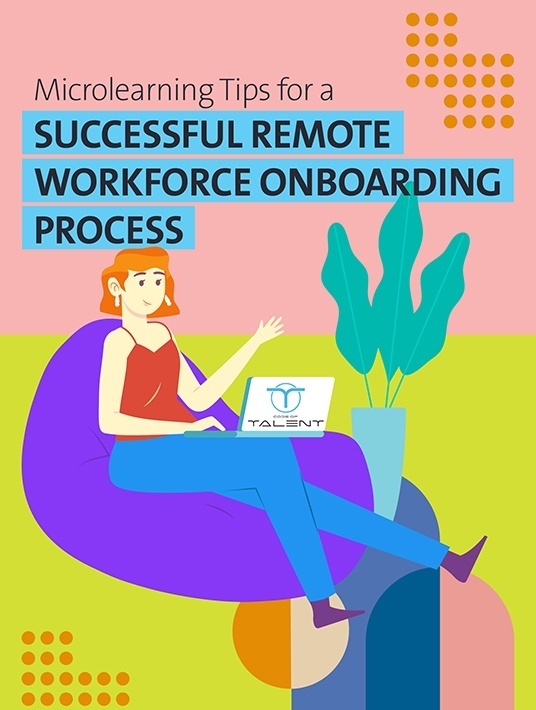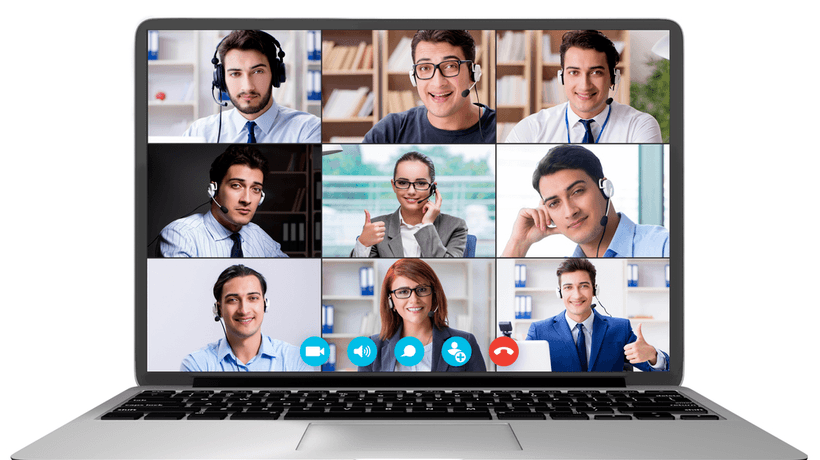Onboarding Virtual Teams? Consider Using A Microlearning LXP
Set up your online learning system to utilize this, so that employee-level users have the ability to build their own training and then manage it. Also, make sure that learning evaluations are structured so that remote workers can easily set up appraisal tools rather than having a system that requires managers to perform manual evaluation. Let's further discuss all about onboarding virtual teams with a microlearning LXP.

A microlearning LXP can blend with different forms of Learning Management Systems (LMSs). So, if your organization has many learning environments, you can bring them all together using microlearning LXP for onboarding. The following are some of the reasons that make a microlearning LXP great for onboarding virtual teams.
1. Employee-Driven
An LXP is a framework that allows learning platforms to provide more granular user controls. This enables workers within the learning community to develop and post their modules and lessons. While this takes away some of the control over content from instructors, it allows the development of lessons created by the users themselves.
When remote employees have control over their training content, they are more likely to be engaged in the onboarding process which helps to improve employee retention of the information provided during orientation and onboarding.
Another reason why the employee-driven framework of an LXP is beneficial is that it allows personalization to accommodate cultural preferences. When it comes to onboarding virtual teams, there is no one-size-fits-all learning program.
A major reason for this is that what one culture may perceive to be encouraging and fun may be deemed rude or misleading by another. With microlearning LXP, you can tailor the content and learning missions to the cultural preferences of individual employees to avoid this.
2. Spaced, Scheduled Content
Spaced training with reinforcement is, as many foreign language learners have already found, a crucial element of fully internalizing new content. In general, conventional methods for onboarding virtual teams have been more conducive to classroom instruction than to contemporary learning that takes the short attention spans of humans into account.
In comparison, a microlearning LXP platform is perfect for providing digestible content over a period of time in chunks that contributes to enhanced comprehension and retention. This also takes the form of microcontent efforts that last a week or more for onboarding remote workers, addressing topics such as procedures, benefits, and resources for help on a continuing basis rather than all at once.
The greatest advantage of this approach is that microlearning can emphasize the most relevant points of common onboarding subjects rather than overburdening new workers with more details than they can manage realistically.
3. Gamification Benefits
Contrary to the widely held belief, simplicity is not the essence of engagement. That is to say, having a short-length learning module does not ensure that workers would want to interact with it.
Especially if the content is just three minutes long, steps should then be taken to keep workers motivated and engaged in any learning content they are offered. A microlearning LXP platform that uses gamification to train and onboard remote employees can be a great way to do that.
Gamification can be the foundation for an effective microlearning training program. This idea is making any form of learning material more engaging by adding game-like elements to it.
Examples include trivia questions, exercises, quizzes, video proofs, or any engaging functionality that allows the new hires joining virtual teams to utilize the knowledge they have just acquired to achieve a virtual goal.
4. Mobile Access
The easy and round-the-clock access to the platform is the fifth and final reason to opt for microlearning LXP when onboarding virtual teams. Given the short and simple design or microlearning, training, and onboarding conducted for remote employees through microlearning LXP should allow mobile delivery of learning material for convenient access. That is exactly the case.
All elements of microlearning training are mobile-friendly and allow the new hires to access content from anywhere, at any time, and on any device.
Microlearning LXP can be a great way to engage virtual learners with enjoyable, informative content that they can access at any time and wherever it is most convenient. The need for microlearning is profoundly linked to the rise of employee-centered organizational cultures that understand the different demands put on the time and resources of employees and aim to support them on the path to professional success.
A key step in this process is to build learning and development systems that meet the needs and desires of workers, and in today's information age, this means cutting the excess material and having microlearning as part of your remote employee onboarding equation.
If you are wondering about the benefits microlearning has to offer to your remote workforce onboarding process, download the eBook Microlearning Tips For A Successful Remote Workforce Onboarding Process. Discover the best microlearning tips that will help you succeed in your remote workforce onboarding process stress-free. Join our webinar and learn which microlearning platform features will boost your employee onboarding process!









